Higher Education today is undergoing the greatest transformation since the 1940s
Even before the onrush of a global health crisis, every aspect of the higher education ecosystem was being re-examined.
Even before the onrush of a global health crisis, every aspect of the higher education ecosystem was being re-examined.
The pandemic has hastened changes that might otherwise have been decades in the making.
Many schools are already innovating in important ways with positive developments such as active-learning pedagogies and hybrid research and teaching models becoming standard practice across the educational sphere. In the wake of the pandemic, we face familiar places complicated by new problems on top of the existing ones.
Despite the uncertainty of our current moment, the time is now to plan and implement the innovations and renovations that will ensure a bright future for American higher education.
Ennead’s Education Center Leadership
Ennead’s Centers of Excellence were established to codify the firm’s experience in specific typologies to optimize and share expertise across the office. Each Center is led by senior Ennead staff who bring deep typological knowledge and and are recognized leaders in their respective markets.

Alex O’Briant
Education Leader

Kristen Alexander
Education Leader
“It’s a fascinating time to be designing academic environments. We’re witnessing a rapid evolution of pedagogy and so it’s incumbent upon us to evolve and develop spaces for learning that can meet these new challenges with flexibility. “
Alex O’Briant AIA, Principal
Alex O’Briant leads our Education Center. Hear his personal approach to education design.
A Principal at Ennead Architects, Alex’s creative approach is driven by the belief that design and institutional culture can merge to create intellectual communities that prioritize learning over teaching and teamwork over individual achievement.
In addition to his project-related responsibilities, he directs the firm’s Center for Education, focusing on exploring and educating on innovations in Higher Education and K-12 projects. Alex speaks regularly at conferences around the country on his design work and on issues in higher education. Recent speaking engagements include 2019 SCUP International and Southern Region Conferences and the 2019 Tradeline University Facilities Conference. Alex has taught architecture at Rice University and Lehigh University.
Education Experience
Higher Education
The University of Texas at Austin, Cockrell School of Engineering, Gary L. Thomas Energy Engineering Building
The University of Texas at Austin, Cockrell School of Engineering, Engineering Education and Research Center (EERC)
The University of Texas at Austin, McCombs School of Business, Robert B. Rowling Hall
Purdue University, College of Science Master Plan
Purdue University, Flex Lab Facility
Purdue University, Chaney-Hale Hall of Science
Purdue University, Dudley and Lambertus Hall
Stanford University, Bass Biology Building
Stanford NYC, Master Plan
Johns Hopkins University, 555 Pennsylvania Avenue
Georgia Institute of Technology, Expansion of Tech Square
The Ohio State University Biomedical and Materials Engineering Complex
City University of New York, Medgar Evers College, Academic Building I
NYU Langone Health, Tisch Hospital
Education, K-12
Colegio San Ignacio
Concordia International School Shanghai, Pudong Campus Realignment Study
Seoul Foreign School, New High School
Frank Sinatra School of the Fine Arts
Seoul Foreign School Facilities Master Plan
Kristen Alexander is an Associate Principal at Ennead Architects specializing in space planning with expertise in translating complex programming requirements into thoughtful and practical spatial solutions that inspire and delight. Kristen believes that the key to successful design lies in understanding the intricate relationship between people and their environments, and she strives to create spaces that reflect and celebrate the cultural identity of a community with authenticity and a sense of place. Her inclusive approach fosters a creative and dynamic environment where ideas are shared, refined, and transformed into tangible architectural solutions that enhance productivity, promote well-being, foster connection, and reflect the unique identity and goals of the client. Kristen has experience on a wide range of academic and institutional projects, and most recently completed a comprehensive planning study for the UNC School of Law, providing strategic insights and innovative solutions to optimize their future campus goals and support the institution’s long-term vision.
Experience
New York University, Steinhardt Hall
United States Embassy, Nassau, Bahamas
United States Embassy, Ankara, Turkey
University of North Carolina, School of Law
University of Michigan, Biomedical Sciences Building
Ennead’s Approach to Higher Ed
We must consider the ways in which our campus environments can be transformed to become more: Experiential, Collaborative, Flexible, Balanced, Healthy and Resilient.
Buildings that are Experiential
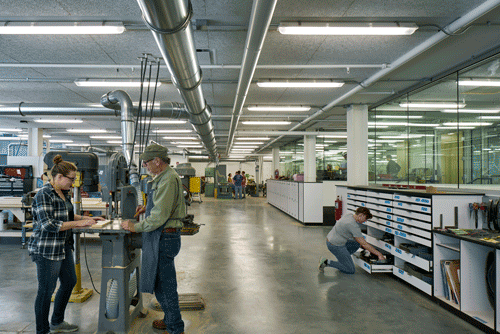
What exactly constitutes “learning” today?
There is a growing consensus among educators, social scientists, and economists that today’s students face a future that will require them to be capable of constant learning, retraining, and new skill acquisition.
In response, academic programs have been moving away from the traditional lecture format and experimenting with alternate learning modes that incorporate other forms of engagement both in and out of the classroom.
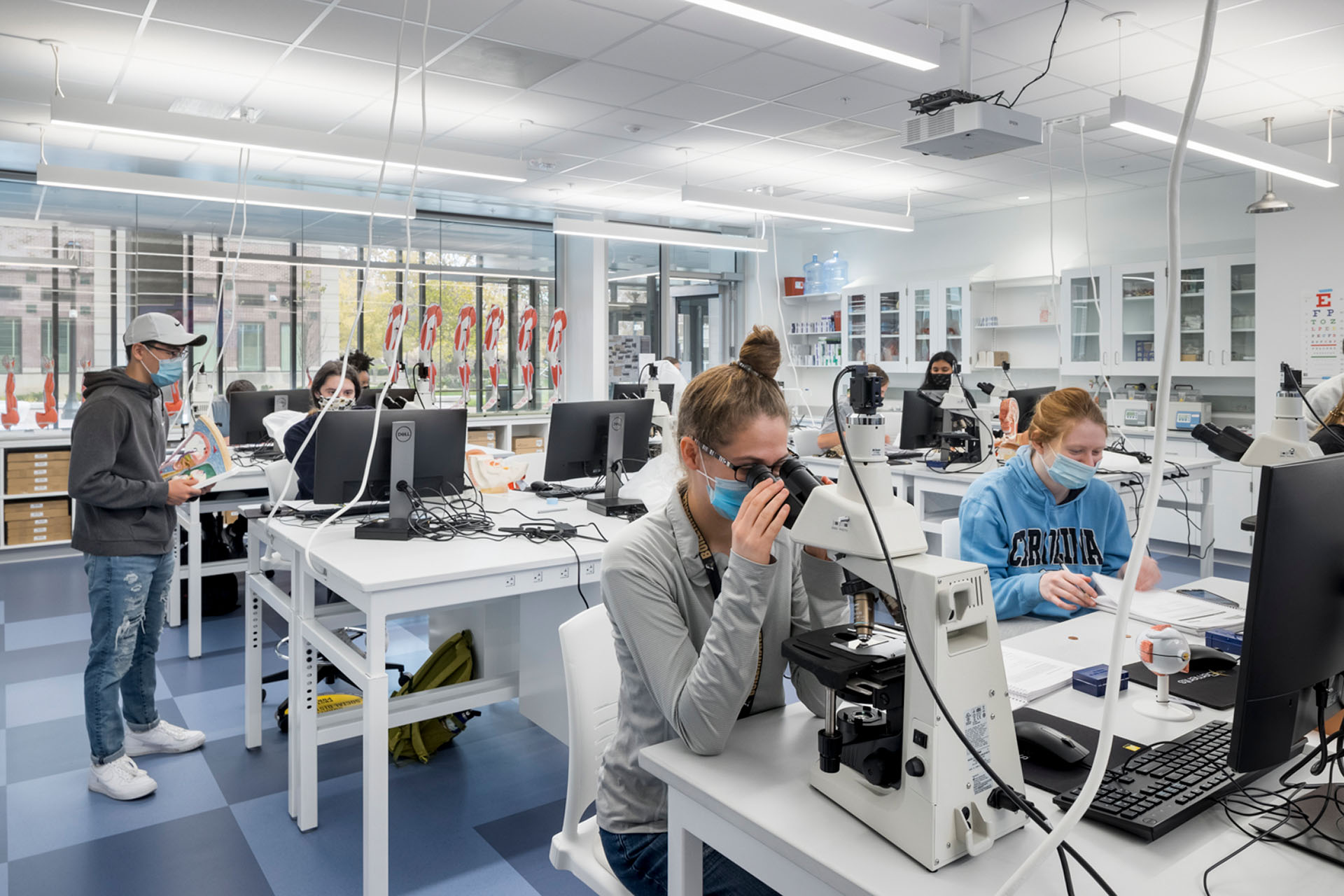
The result is a much more diverse landscape of learning spaces, and a much greater emphasis on experiential, hands-on learning. While the “makerspace” has become a near-ubiquitous feature across a surprising array of disciplines, other classroom types such as design thinking studios, robotics labs, sound stages or media suites enable other experiences.
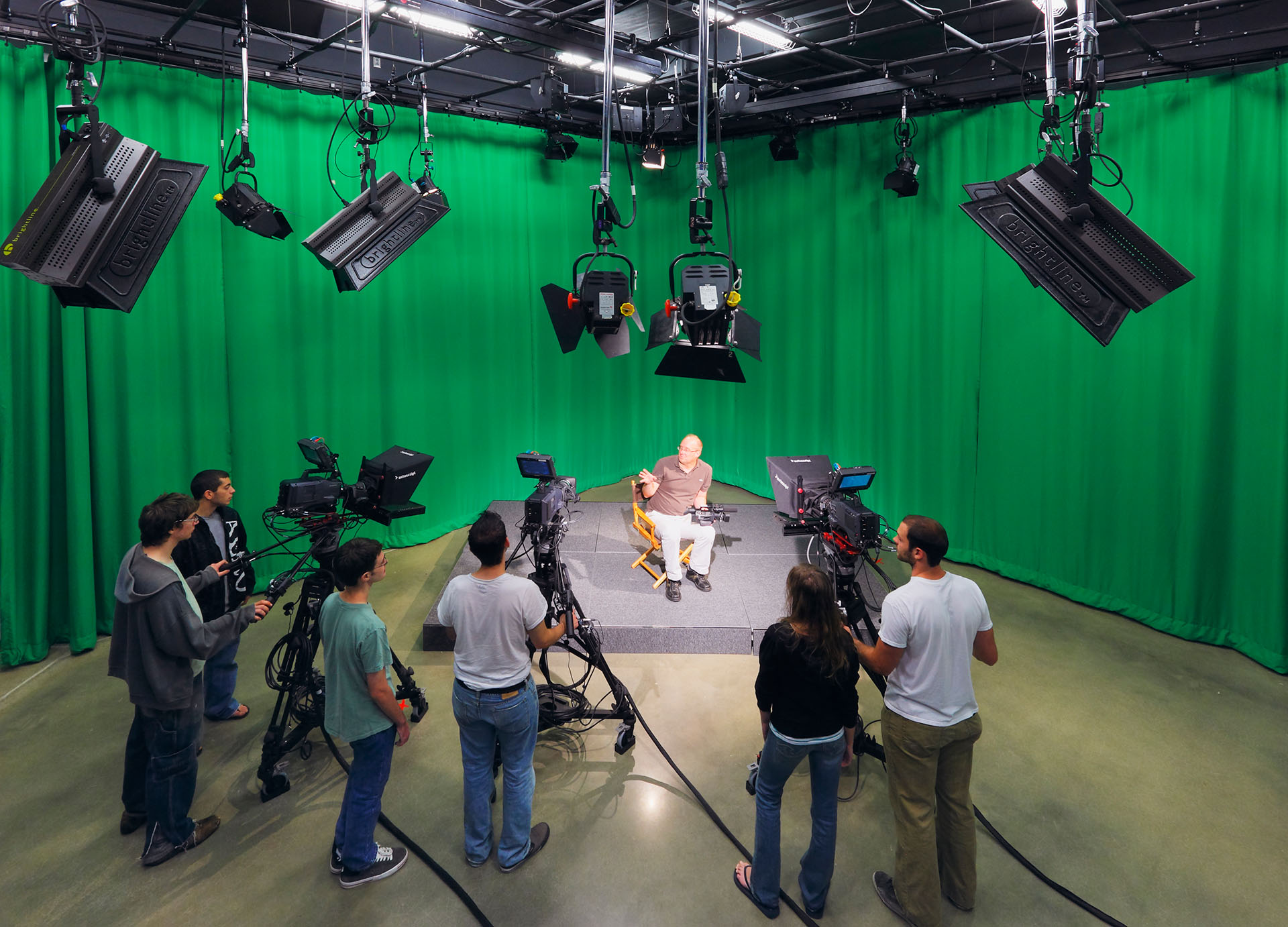
Experiential Learning Factors
• Hands-On (maker space, etc.)
• Design Thinking
• Incubators and Innovation Hubs
• Experimental Classrooms
• Flexibility
The vibrant, light-filled atrium is lined with an array of space types, creating a sense of community and identity for the Cockrell School of Engineering, Engineering Education and Research Center at The University of Texas at Austin.
Buildings that are Collaborative
Throughout history, the most impactful innovations have not been created in solitude, but through collaboration: Neil Armstrong took his first steps on the moon propelled by the ingenuity of thousands of people.
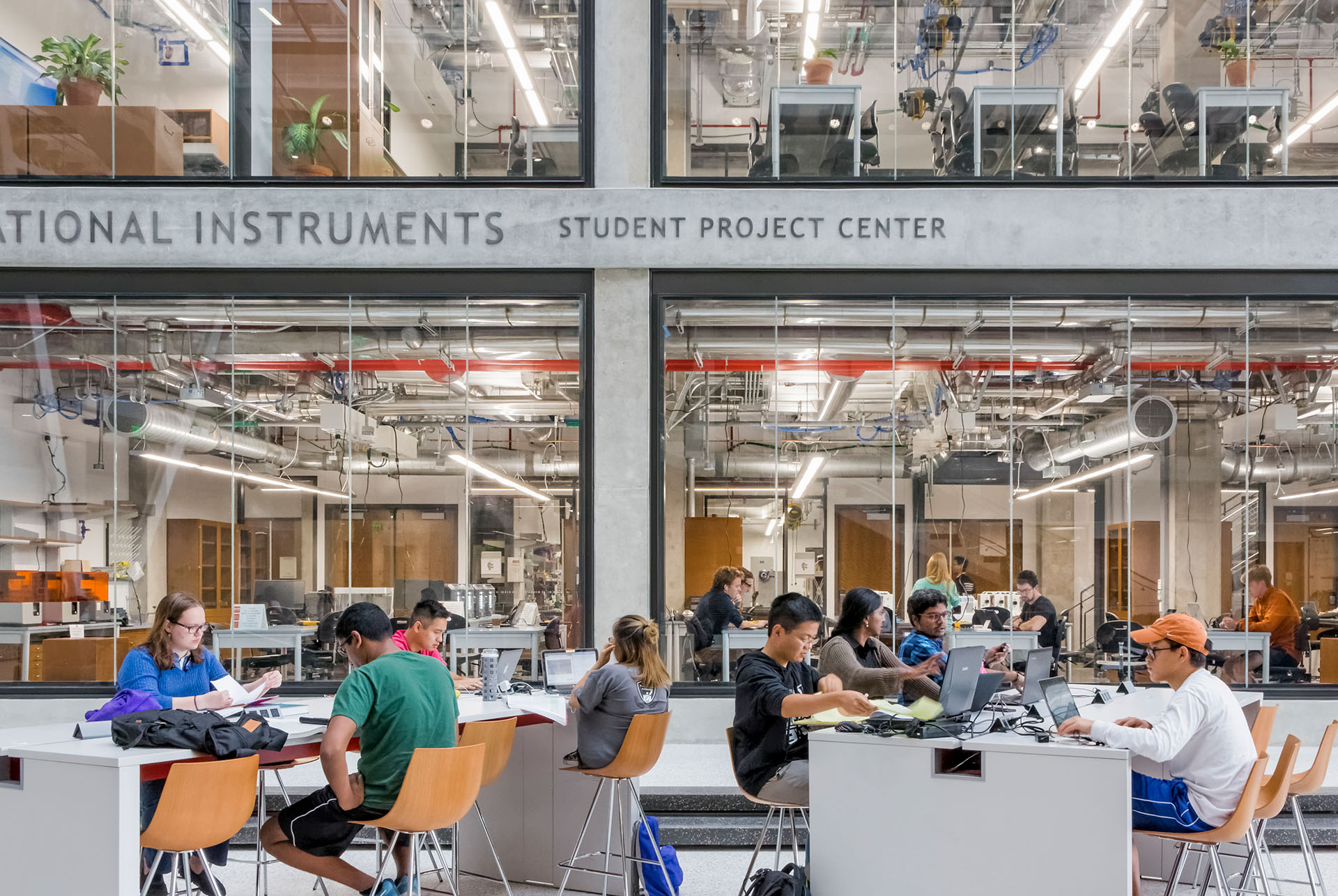
Collaborative Learning Factors
• Interdisciplinary programs
• In-between Spaces
• Attractors
• Showcases
• Virtual Communities
Intellectual communities working closely together are fundamental drivers of knowledge and social progress, and the beating heart of every school. For campuses to ably support these communities, they need spaces that prioritize teamwork and purposeful engagement. An effective ecosystem of collaborative space is varied, versatile, and well-distributed throughout a campus. There is no universal design solution for this kind of space, because collaborations come in many forms, teams come in many sizes, and needs change from day to day.
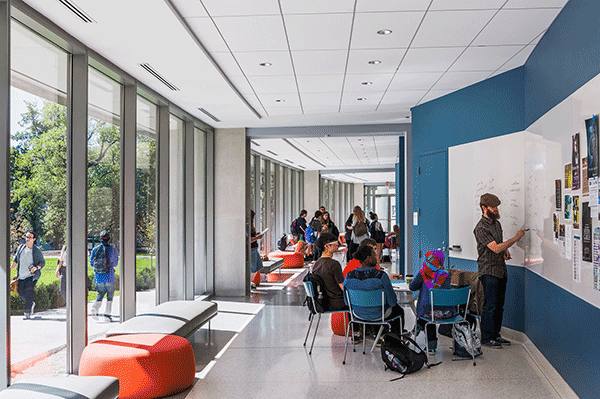
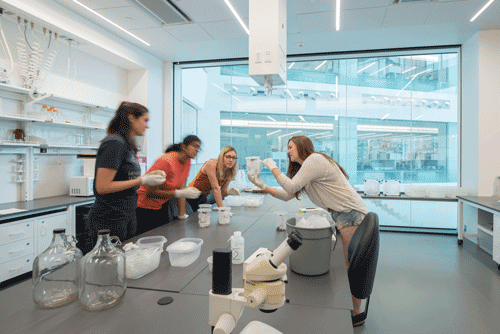
Because teamwork is about people, our approach to designing collaboration space is to deeply understand the needs of the overlapping communities that will use our buildings. Balancing the many parameters that must be considered — location, size, visibility, access, functionality, comfort, institutional culture — we draw from our broad experience to create collaborative environments that enhance the intellectual communities they serve.
The vibrant, light-filled atrium is lined with an array of space types, creating a sense of community and identity for the Cockrell School of Engineering, Engineering Education and Research Center at The University of Texas at Austin.
Buildings that are Flexible
At Arizona State University, the Beus Center for Law and Society is designed as a permeable environment that blurs inside and outside environments. Movable tiered seating allows the Great Hall to be used as lobby, lecture hall and general gathering space.
Flexible Building Factors
• Use wide column spacing
• Keep floors flat
• …and keep them tall
• Add windows everywhere possible
• Use simple, versatile surfaces
• Variety of classroom types
• …and a variety of collaboration spaces
• Use convertible spaces strategically (and sparingly)
• Include spaces to test new things
• Encourage sharing
The rapid evolution of pedagogy and technology puts constant pressure on our built environment. Never before have our buildings needed to be as flexible as they do today.
There is, however, no one-size-fits all solution, because flexibility comes in many forms: Aging building stock needs to be adapted to new purposes.
Yesterday’s technology needs to be switched out for tomorrow’s. A lab modifies research priorities. A classroom needs a different configuration in the afternoon than it did in the morning. Or, as we know all too well, spaces need to be adjusted in the midst of a pandemic.
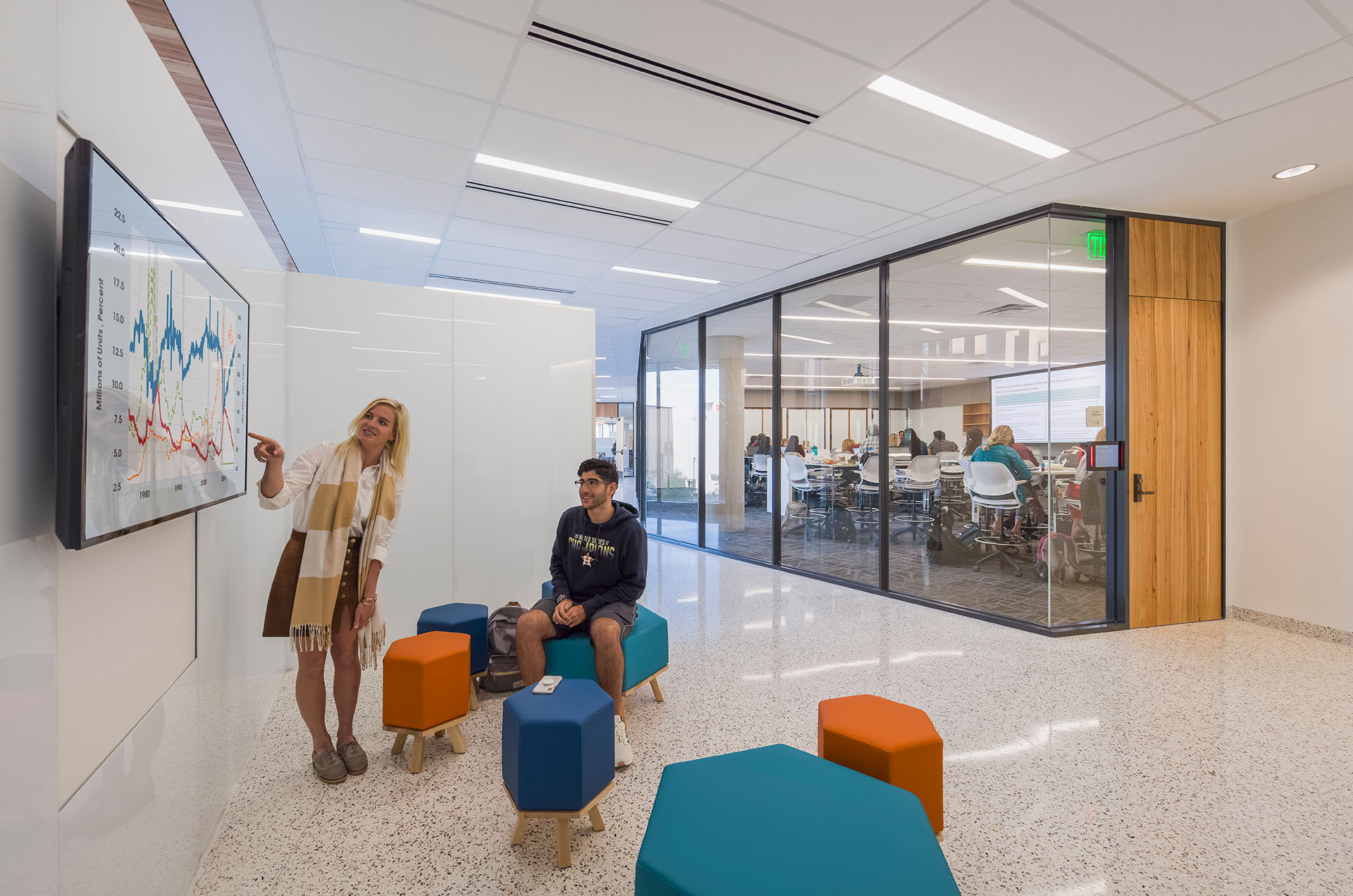
To make our buildings future-friendly, it is important to consider different time scales and the variety of ways they need to adapt. Our many flexible teaching and research environments are designed to adapt to changing needs over the course of a day, a year, or a lifetime. And while there is never only one way to create flexible space, we have developed general guidelines that can be applied to many different building types and campuses.
At Purdue University, Flex Lab Facility, a super-flexible lab layout defined by re-combinable bench space and support labs, high-bay research space, low vibration basement labs for optics, and a complementary landscape of hoteling offices, open work areas, hot desk space and “work cafes” addresses the constant evolution of the engineering disciplines.
Buildings that are Balanced
The nature of work, and the space required to support it, is rapidly changing. While the business world has been adapting by experimenting with the design of its workspaces for years, colleges and universities have been more slow to evolve. This must change, as institutions will increasingly be called on to meet the more complex needs of today’s faculty, staff, and student workforces.
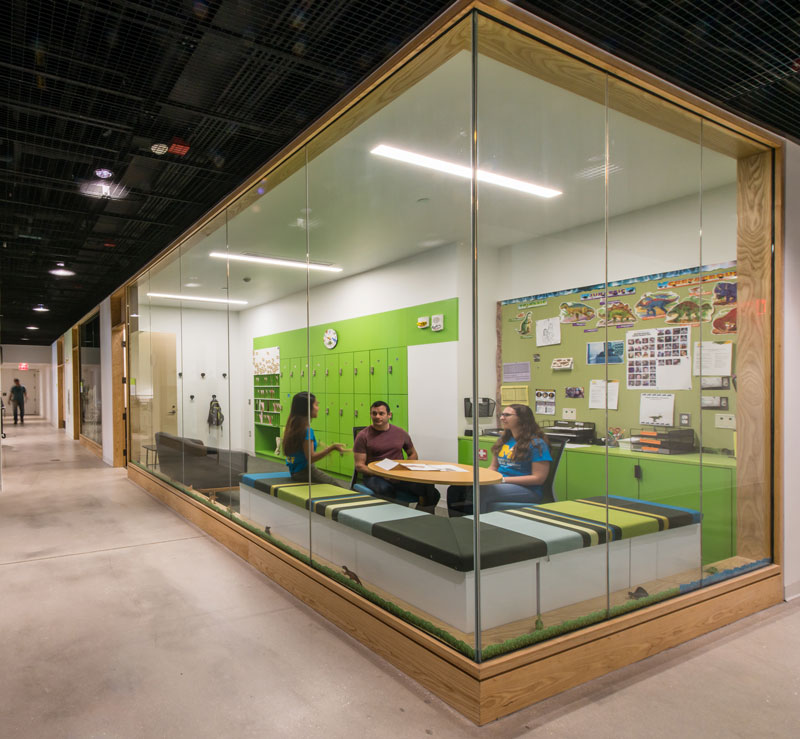
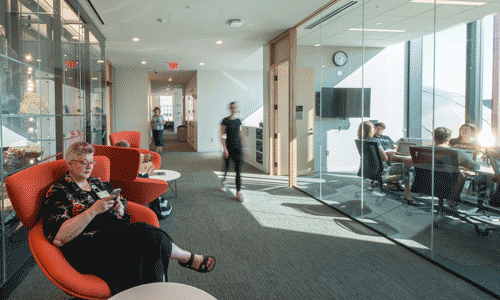
Balanced Building Factors
• Private office standards
• Collaborative space
• Flexibility
• Comfort and amenities
• Hotel and hot desk models
• Technology
Offices and administrative suites are some of the most prevalent and costly spaces on any campus, and many institutions have been searching for new workplace solutions that are more efficient, adaptable, and productive. We are actively exploring innovations in the workplace across the full spectrum of our projects.
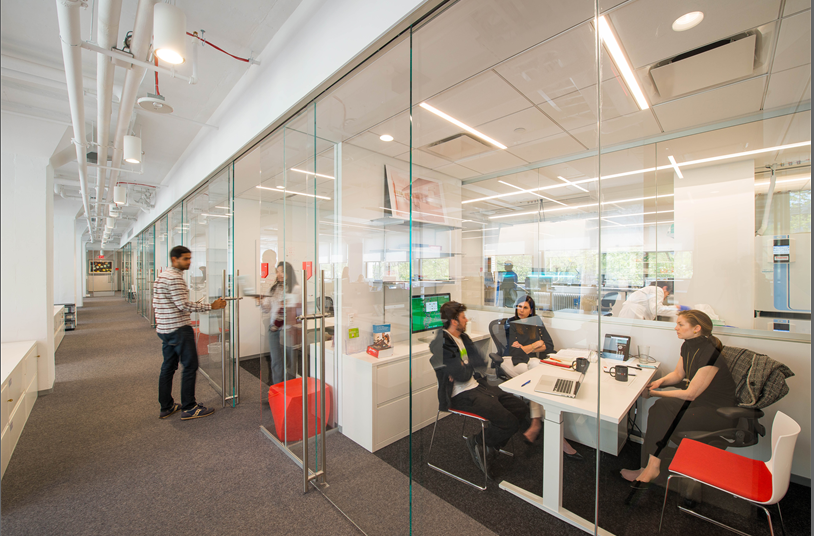
The pandemic, despite its many challenges, provided a valuable demonstration of untapped workspace possibilities. The home office became more prevalent, as did a focus on better balance between work and home life.
Helping our communities create better work/life balance is one of the imperatives of workplace design today, as a well-balanced work environment will lead to happier workers, more collaboration, better recruiting and retention, and richer working relationships.
Buildings that are Healthy
Over the last decade, schools have increasingly focused on the health and wellbeing of their communities, with particular attention paid to the mental health of students.
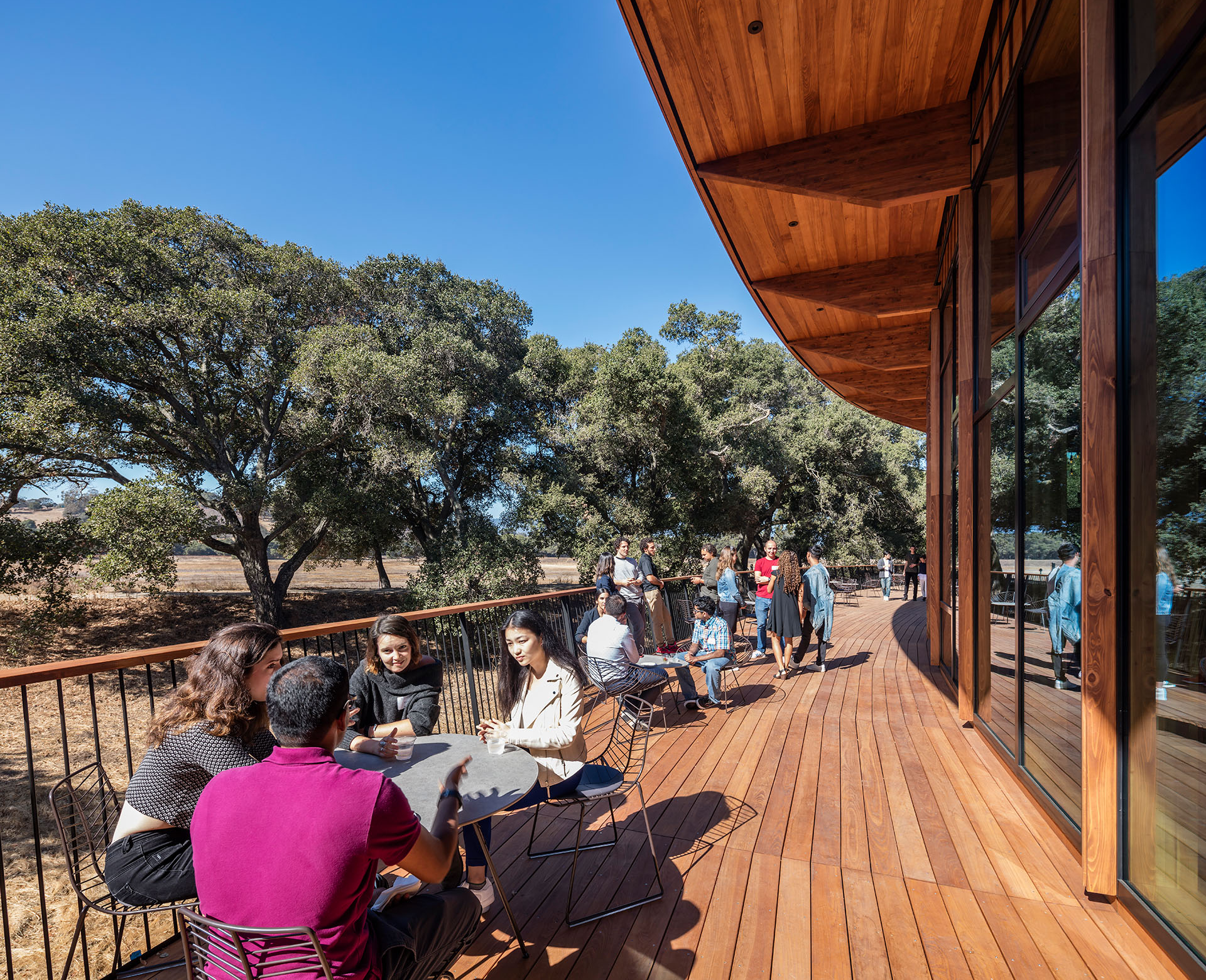
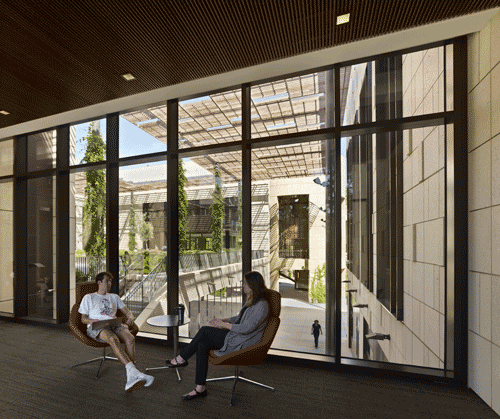
Healthy Building Factors
• Daylight
• Accessibility
• Comfort
• Connection to outdoors
• Amenities
• Diversity, equity and inclusion
Today, we recognize that successful outcomes such as improved classroom performance or higher graduation rates are closely related to health and wellness initiatives. An increase in counseling and advising services, coupled with other programs focused on both body and mind, have yielded new education space types such as the wellness center, made up of a variety of health-focused components such as community rooms, yoga studios, and counseling suites. An emphasis on healthy and comfortable building environments is driving design solutions worldwide.
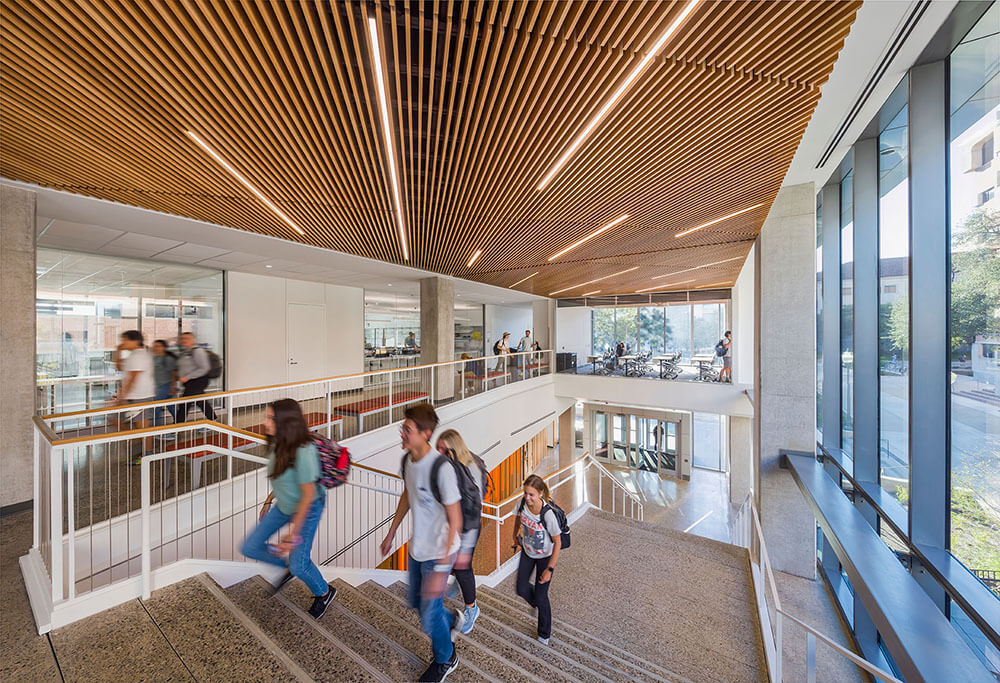
The pandemic has made wellness issues ever more urgent. To keep our communities safe, we need facilities that redefine the very notion of what constitutes a “healthy” space. As the global health crisis is constantly evolving, flexibility will be key. The “healthy” buildings of the future will have better tools to address many of the recently exposed vulnerabilities of campus life.
Buildings that are Resilient
From chronic issues such as deferred maintenance to acute situations like extreme weather events, pandemics, or other crises, schools experience many challenges over the years. The most successful institutions are able to meet these challenges because their campuses are resilient.
However, resilience does not happen by accident. It takes strategic thinking, careful planning, and investment of both time and money.
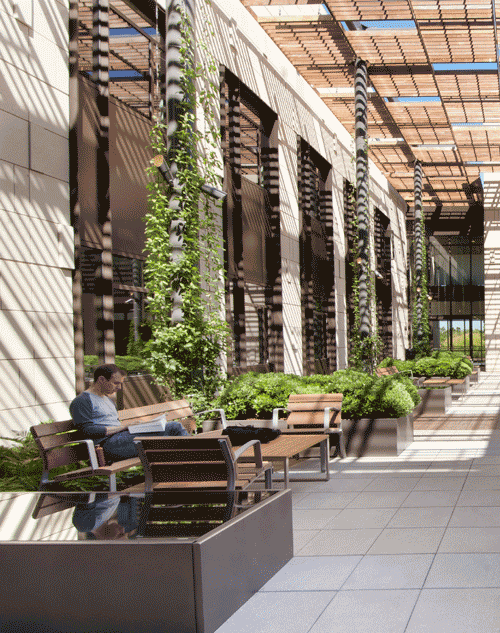
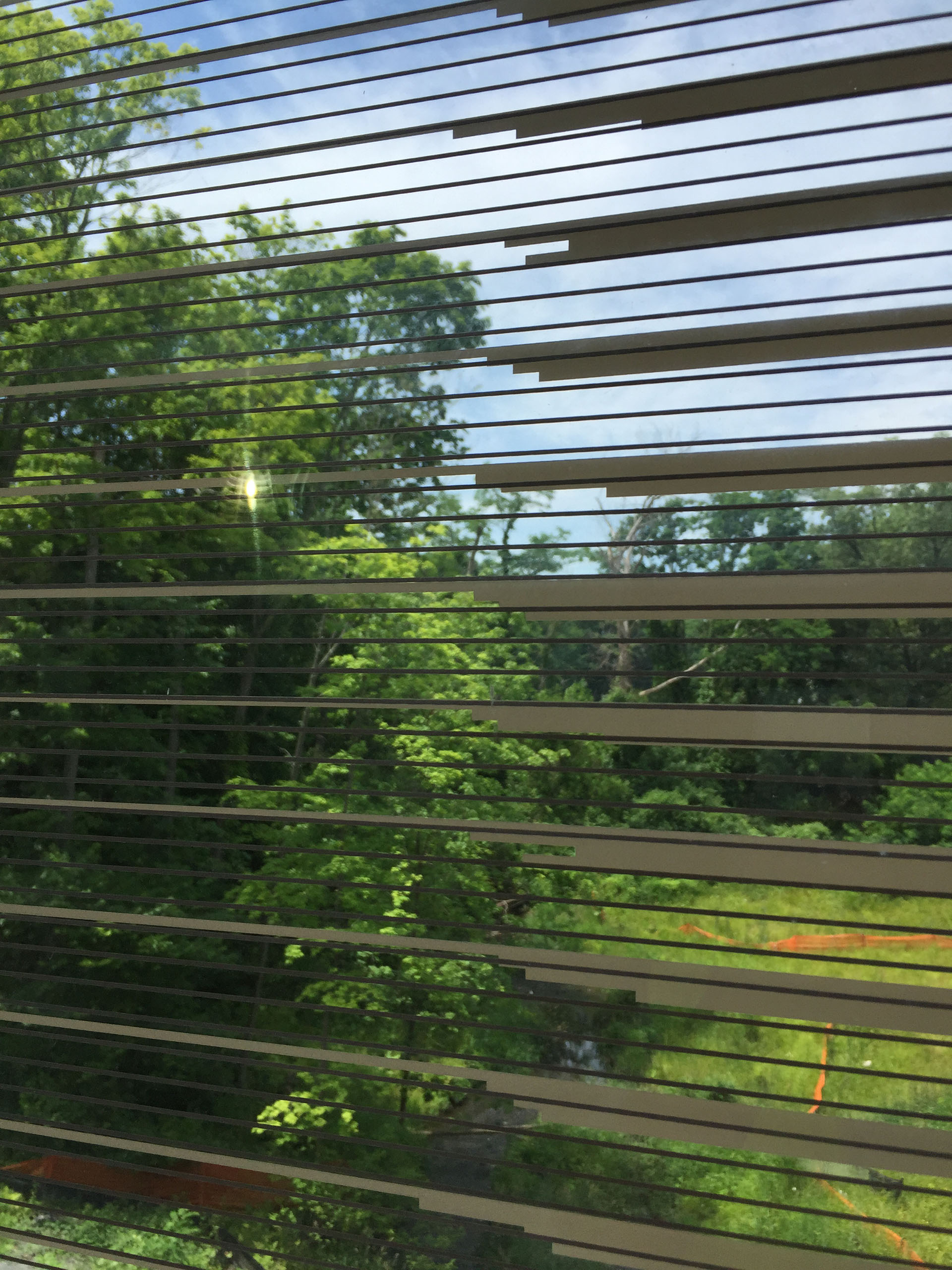
Healthy Building Factors
• Daylight
• Accessibility
• Comfort
• Connection to outdoors
• Amenities
• Diversity, equity and inclusion
There are many dimensions to building and maintaining a resilient campus — energy performance, resource management, healthy environments, adaptability, diversity & inclusion, and economy & value, to name just a few.
Our design approach, even on the smallest of projects, is to consider your campus holistically to ensure that decisions we make together help to secure a healthy future for your school.

The pandemic has made wellness issues ever more urgent. To keep our communities safe, we need facilities that redefine the very notion of what constitutes a “healthy” space. As the global health crisis is constantly evolving, flexibility will be key. The “healthy” buildings of the future will have better tools to address many of the recently exposed vulnerabilities of campus life.
Professional Schools
Drawing from the professional environment, our approach to professional and business school architecture focuses on creating linkages and connections between spaces that allows for productive networks between students, faculty, staff, and visitors.
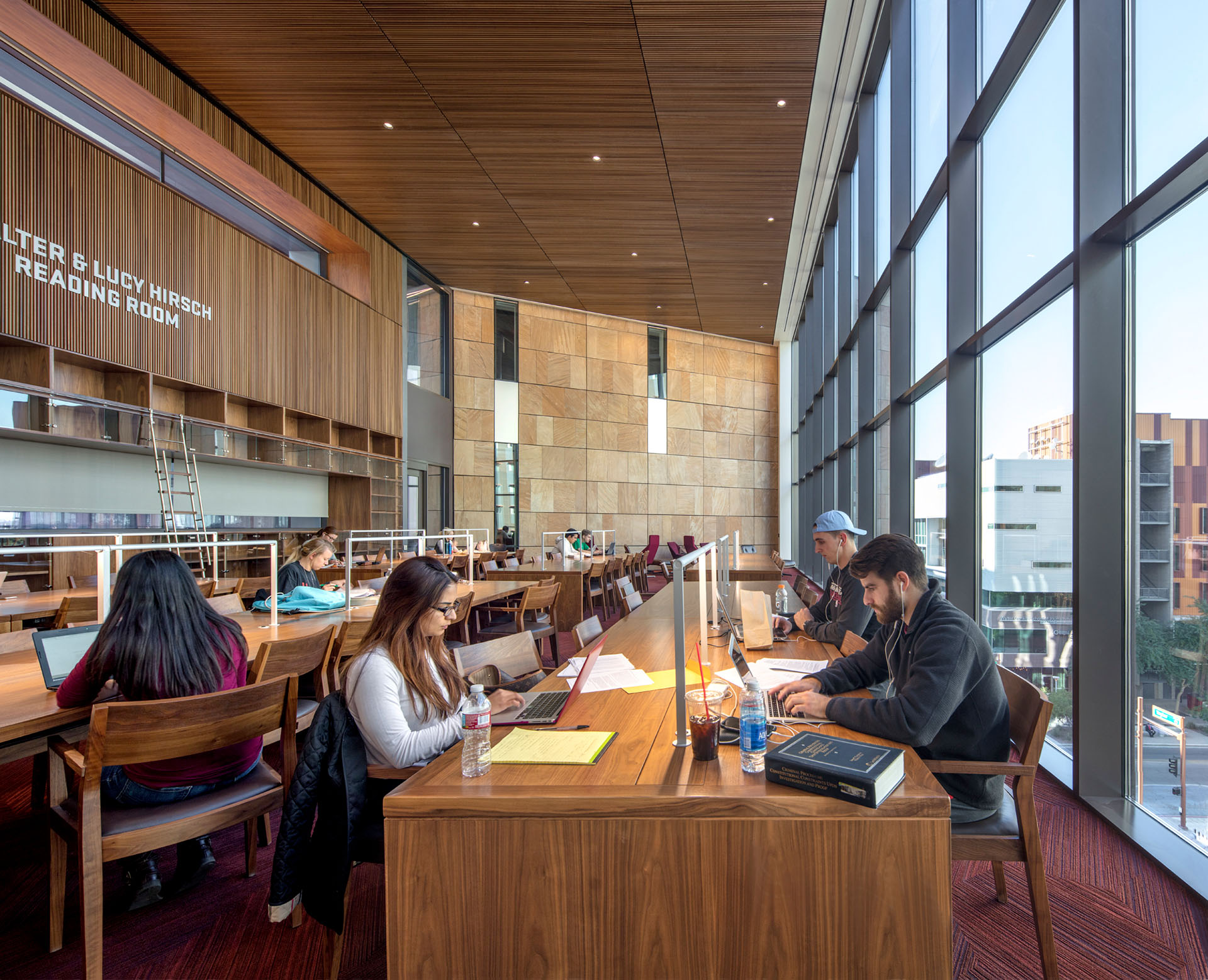
Visual and Performing Arts
Our educational facilities for the visual and performing arts merge the traditional arts disciplines with innovations in technology to inspire curiosity, interdisciplinary activity and collaboration. Our visual and performing arts spaces contribute to the larger community by showcasing the respective schools’ inner workings and projecting them outward.
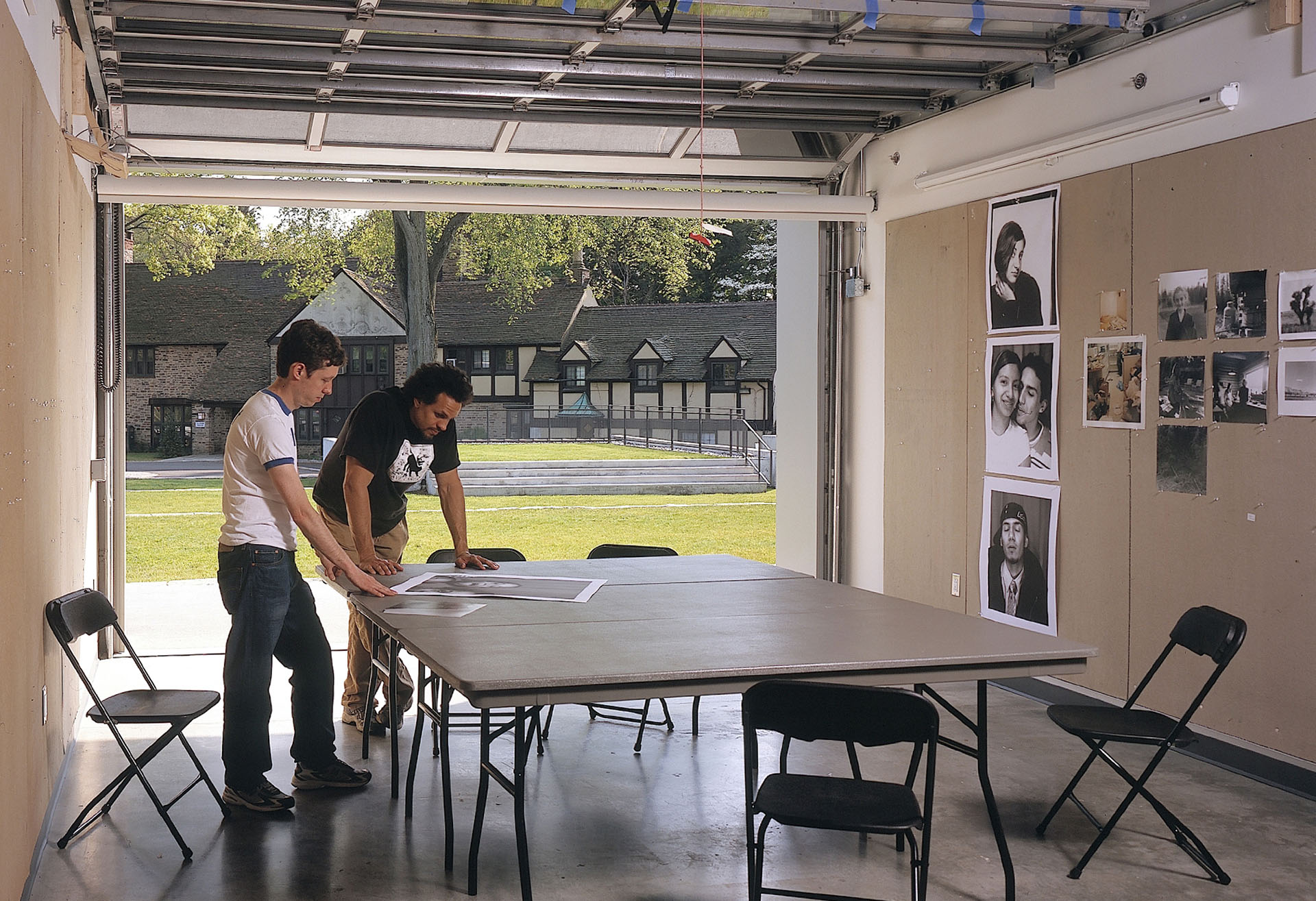
Selected Clients
Alleghany College
Bard Graduate Center
Mass College of Art and Design
Sarah Lawrence College
Seoul Foreign School
Smith College
Stanford University
University of Michigan
Yale University
Research & Teaching Labs
Our academic laboratories provide state-of-the-art research environments where multiple disciplines can collaborate on diverse research projects. We integrate carefully scaled and integrated communal spaces in our research facilities to create a sense of identity for the research community and to encourage knowledge sharing.
The design of our laboratories is flexible and adaptable. This adaptability helps institutions and the spaces supporting them thrive long into the future, especially as technology and research needs adjust.
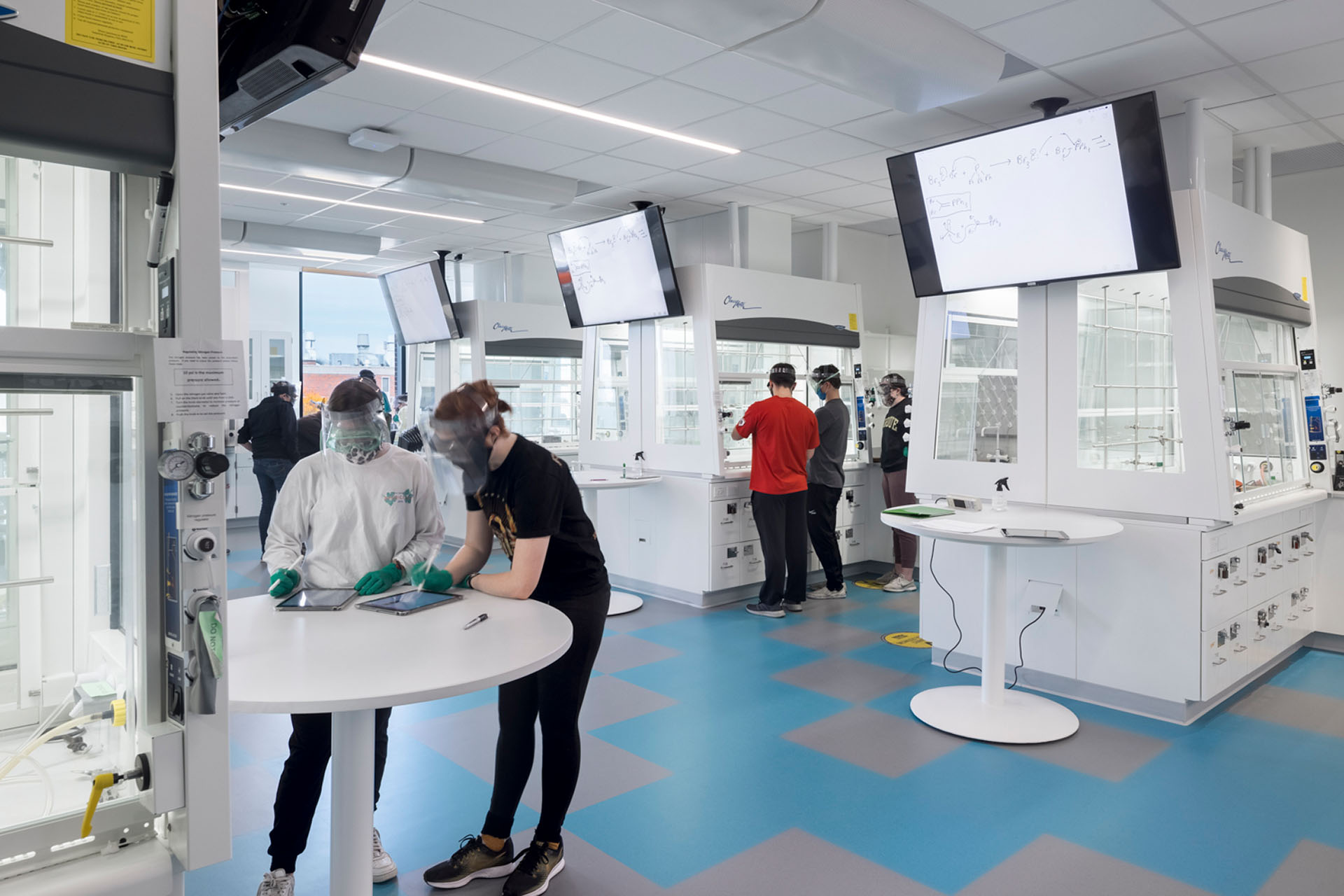
General Academic
We design dynamic centers for academic and student life. Each conveys a welcoming identity and creates an enriching environment for student growth and development inside and outside of the classroom. Our educational spaces are driven by the logic of the program and informed by current thinking about academic models and by the conviction that they must promote interaction and collaboration and foster a larger sense of institutional community.
They foster successful implementation of new pedagogical techniques, such as the flipped classroom, and technological advances. They establish and strengthen connections between faculty and students by introducing a variety of informal spaces that function as connective tissue, promoting social and academic interchange. They excel at unifying areas of focused program with interdisciplinary and community space where students and teachers come together to exchange ideas.
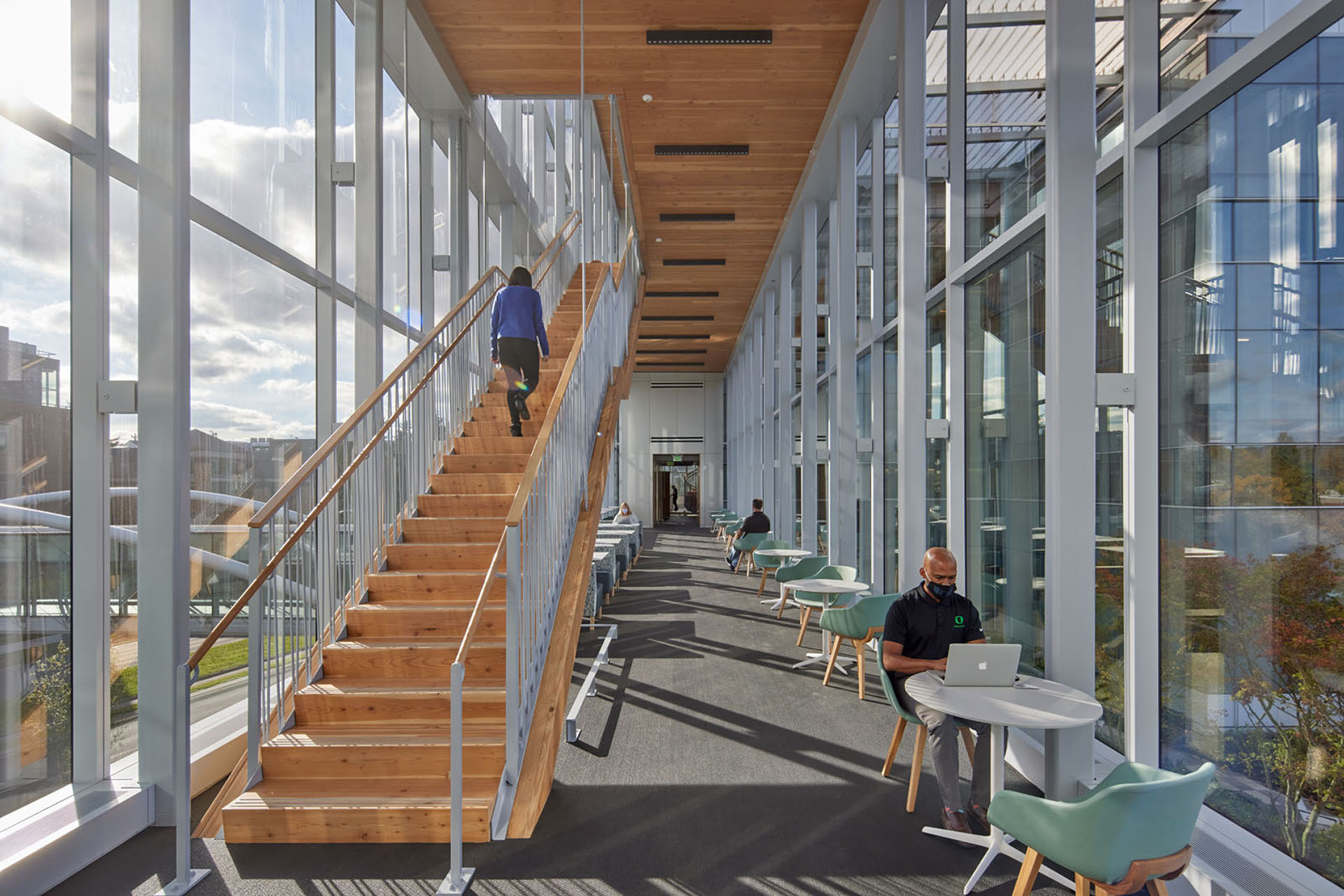
Master Planning
Our campus planning practice draws from our academic building design process. Our master plans are eminently practical, flexible and buildable, conceived in economically viable increments that can evolve over time to accommodate inevitably changing academic, social, and technical needs and funding sources.
The planning methodology is focused on identifying, understanding and preserving those aspects of the current environment that have been seminal in the support and development of a mature academic culture, and codifying these proven planning criteria as precepts and rules for revision and expansion. By using what worked in the past to expand to the future – coupled with innovative new planning concepts and tactical interventions – our team can ensure both the preservation and growth of institution’s culture.
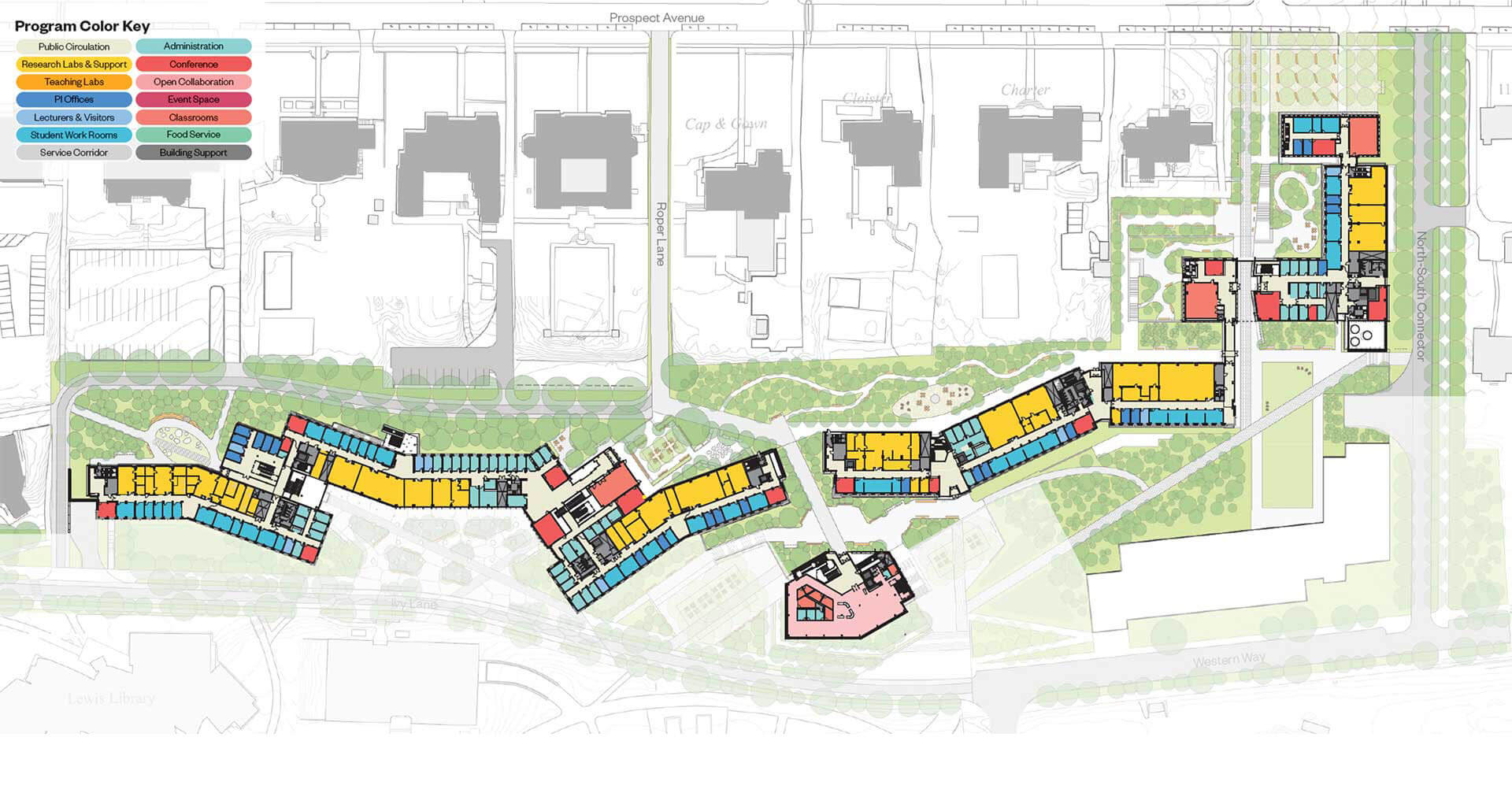
Community Colleges
We admire the way community colleges serve local communities and offer flexibility for working students, providing a vital alternative to four-year residential schools. These unique institutions are well-positioned to create new educational models for the next generation, and in the coming decades will play a critical role in the higher education landscape.
In our work with community colleges we focus on creating high-value academic space, coupling our experience designing innovative learning environments with our well-honed ability to work within modest budgets.




